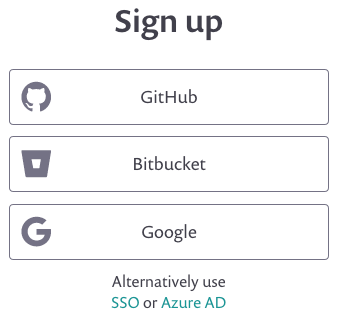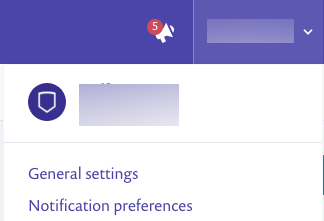Snyk Security
Snyk Security
Expected Outcome
- Install Snyk
- Test open source dependencies of the Petstore application, have it fail, remediate security issue, and then have it pass.
- Test a docker image for security vulnerabilities
Lab Requirements: Automation lab must be completed
Average Lab Time: 30 minutes
Introduction
This module is designed to introduce scanning open source dependencies of the application and the Docker container that is created during this workshop. The files required for this module have already been created and reside in the /modules/snyk folder. You will copy these over while following the steps below.
Background
Snyk is a SaaS offering that organizations use to find, fix, prevent and monitor open source dependencies. Snyk is a developer first platform that can be easily integrated into the Software Development Lifecycle (SDLC).
At this point of the module, the Petstore application is created, so we will look to insert Snyk as part of an important security gate during the build process.
This module will demonstrate how to fail a build when high severity issues are found so that remediation can take place.
Snyk CLI
The Snyk command line interface (CLI) has three key commands for this exercise:
- snyk auth which links the CLI to your account and authorizes it to perform tests.
- We will utilize Amazon’s System Manager Parameters to store this token to avoid hard-coding tokens.
- Alternatively to using snyk auth, you can also set an environment variable SNYK_TOKEN which the CLI will automatically detect.
- snyk test performs the actual test and can fail a build
- snyk monitor posts a snapshot for continuous monitoring and reporting on the snyk.io interface where you created your account.
Tasks for this Lab
For the purposes of this module, Snyk will be inserted into two key processes, when the application is being built, and when the Docker container is created.
This module has five sections:
1. Obtain a token for testing from https://snyk.io/
2. Setting up application scanning
3. Setting up Docker analysis
4. Running a test and fixing the issue(s) detected
5. Viewing the status on the Snyk dashboard
Create a Snyk Account and Obtain a Token
Obtain an account and setting up the credentials for this exercise:
- You will sign up to https://app.snyk.io/signup using
Google,BitbucketorGithubcredentials. Snyk utilizes these services for authentication and does not store passwords.

- Once signed up you will navigate to your name (top right), and select Account Settings

- Under API Token, click Show and copy this value, it will be unique for each user.

- Clicking Show reveals the token to copy.

Save Password to Session Manager
Run the following command, replacing abc123, with your unique token. This places the token in the session parameter manager.
aws ssm put-parameter --name "snykAuthToken" --value "abc123" --type SecureStringSetup the Application Scanning
We want to insert testing with Snyk after maven has built the application. The simplest method is to insert commands to download, authorize and run the Snyk commands after Mvn has built the application/dependency tree.
In modules/snyk/Dockerfile, we have inserted the following commands to perform these actions
Set an environment variable from a value passed to the docker build command, this will contain the token for Snyk. By using an environment variable, Snyk will automatically detect the token when used.
#~~~~~~~SNYK Variable~~~~~~~~~~~~
# Declare Snyktoken as a build-arg
ARG snyk_auth_token
# Set the SNYK_TOKEN environment variable
ENV SNYK_TOKEN=${snyk_auth_token}
#~~~~~~~~~~~~~~~~~~~~~~~~~~~~~~~~Download Snyk, run a test, looking for medium to high severity issues, and if the build succeeds, post the results to Snyk for monitoring and reporting. If a new vulnerability is found, you will be notified.
# package the application
RUN mvn package -Dmaven.test.skip=true
#~~~~~~~SNYK test~~~~~~~~~~~~
# download, configure and run snyk. Break build if vulns present, post results to `https://snyk.io/`
RUN curl -Lo ./snyk "https://github.com/snyk/snyk/releases/download/v1.210.0/snyk-linux"
RUN chmod -R +x ./snyk
#Auth set through environment variable
RUN ./snyk test --severity-threshold=medium
RUN ./snyk monitorSetting Up Docker Scanning
Later in the build process, a docker image is created. We want to analyze it for vulnerabilities. We will do this in buildspec.yml. First, pull the Snyk token snykAuthToken from the parameter store:
env:
parameter-store:
SNYK_AUTH_TOKEN: "snykAuthToken"In the prebuild phase, we will install Snyk
phases:
pre_build:
commands:
- PWDUTILS=$(pwd)
- curl -Lo ./snyk "https://github.com/snyk/snyk/releases/download/v1.210.0/snyk-linux"
- chmod -R +x ./snykIn the build phase we will pass the token to the docker compose command where it will be retrieved in the Dockerfile code we previously setup to test the application:
build:
commands:
- docker build --build-arg snyk_auth_token=$SNYK_AUTH_TOKEN -t $REPOSITORY_URI:latest .Next we will authorize the Snyk instance for testing the Docker image that’s produced. If it passes we will pass the results to Snyk for monitoring and reporting.
build:
commands:
- $PWDUTILS/snyk auth $SNYK_AUTH_TOKEN
- $PWDUTILS/snyk test --docker $REPOSITORY_URI:latest
- $PWDUTILS/snyk monitor --docker $REPOSITORY_URI:latest
- docker tag $REPOSITORY_URI:latest $REPOSITORY_URI:$IMAGE_TAGIn terminal, navigate to this folder:
cd ~/environment/aws-modernization-workshop/To try this module, let us copy the Snyk versions over to our build:
cp modules/snyk/Dockerfile modules/containerize-application/Dockerfile
cp modules/snyk/buildspec.yml buildspec.ymlExercise - Testing
In the Containerize Application lab you saw how to build your application. In this exercise you will try to run your build, which will fail due to security vulnerabilities being found. While normally done during the code development phase, we will take you through the process of fixing the vulnerability, and then re-running the exercise to see the build succeed.
Save changes:
git commit -am "snyk"Push:
git push -f codecommit masterNow in CodeBuild, look at your build history. Note it may take a minute or two for the new scan to run.

Let’s look at why this failed. We see security vulnerabilities were found and we’re told how to fix it!
Testing /usr/src/app...
✗ Medium severity vulnerability found in org.primefaces:primefaces
Description: Cross-site Scripting (XSS)
Info: https://snyk.io/vuln/SNYK-JAVA-ORGPRIMEFACES-31642
Introduced through: org.primefaces:primefaces@6.1
From: org.primefaces:primefaces@6.1
Remediation:
Upgrade direct dependency org.primefaces:primefaces@6.1 to org.primefaces:primefaces@6.2 (triggers upgrades to org.primefaces:primefaces@6.2)
✗ Medium severity vulnerability found in org.primefaces:primefaces
Description: Cross-site Scripting (XSS)
Info: https://snyk.io/vuln/SNYK-JAVA-ORGPRIMEFACES-31643
Introduced through: org.primefaces:primefaces@6.1
From: org.primefaces:primefaces@6.1
Remediation:
Upgrade direct dependency org.primefaces:primefaces@6.1 to org.primefaces:primefaces@6.2 (triggers upgrades to org.primefaces:primefaces@6.2)
Organisation: sample-integrations
Package manager: maven
Target file: pom.xml
Open source: no
Project path: /usr/src/app
Tested 37 dependencies for known vulnerabilities, found 2 vulnerabilities, 2 vulnerable paths.
The command '/bin/sh -c ./snyk test' returned a non-zero code: 1
[Container] 2018/11/09 03:46:22 Command did not exit successfully docker build --build-arg snyk_auth_token=$SNYK_AUTH_TOKEN -t $REPOSITORY_URI:latest . exit status 1
[Container] 2018/11/09 03:46:22 Phase complete: BUILD Success: false
[Container] 2018/11/09 03:46:22 Phase context status code: COMMAND_EXECUTION_ERROR Message: Error while executing command: docker build --build-arg snyk_auth_token=$SNYK_AUTH_TOKEN -t $REPOSITORY_URI:latest .. Reason: exit status 1Exercise - Fixing the Vulnerability
According to the remediation, we need to fix the PrimeFaces dependency and update it from version 6.1 to 6.2.
Let us pretend the developer fixed it and checked it in, coming back into the pipeline. This is done by changing.
~/environment/aws-modernization-workshop/modules/containerize-application/app/pom.xml
Changing:
<version.primefaces>6.1</version.primefaces>To:
<version.primefaces>6.2</version.primefaces>Run this command to copy over our fixed version in the lab:
cp modules/snyk/pom.xml modules/containerize-application/app/Save changes:
git commit -am "Fix vulnerable open source dep."Push:
git push -f codecommit masterThis time check Code Builder and we see it succeeded.

Tested 37 dependencies for known vulnerabilities, no vulnerable paths found.
Next steps:
- Run `snyk monitor` to be notified about new related vulnerabilities.The vulnerability is fixed and the build succeeded!
Next, we also see Snyk successfully scanned the Docker Image and there were no package dependency issues with our Docker container!
Container] 2018/11/09 03:54:14 Running command $PWDUTILS/snyk test --docker $REPOSITORY_URI:latest
Testing 300326902600.dkr.ecr.us-west-2.amazonaws.com/petstore_frontend:latest...
Organisation: sample-integrations
Package manager: rpm
Docker image: 300326902600.dkr.ecr.us-west-2.amazonaws.com/petstore_frontend:latest
✓ Tested 190 dependencies for known vulnerabilities, no vulnerable paths found.Viewing Reporting
- Navigate back to
https://snyk.io/. - You will see your Docker Image and Java application displayed
- Click View Report
- Set frequency project will be checked for vulnerabilities with the drop down list
- Click on View Report and then the Dependencies tab to see what libraries were used. Click View All Dependencies
- Use the Integrations tab (optionally) to connect and automate creation of fixes against a code repository.
